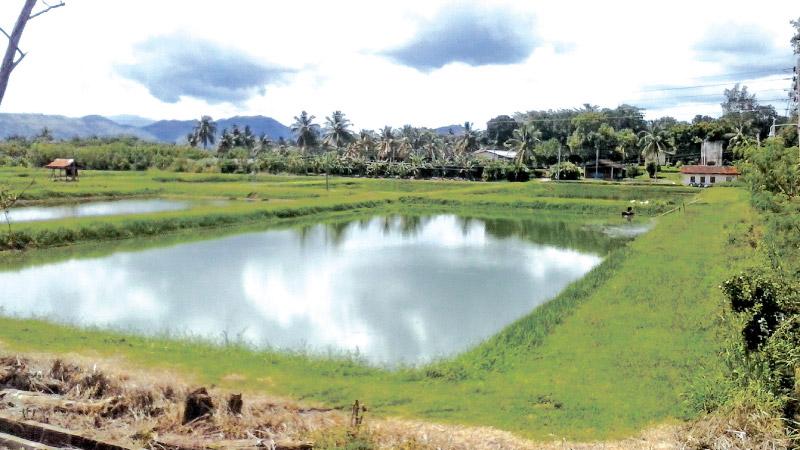
According to recent reports, the Government intends to set-up two aquaculture industrial parks in the Mannar and Batticaloa districts while the establishment of another aquaculture park is being proposed in the Hambantota district.
Plans are afoot also to establish technical training colleges on fishing and aquaculture to enhance the technical capacity of the Sri Lankan fishing and freshwater aquaculture community in developing sustainable and energy efficient practices.
It’s heartening to note that aquaculture is now recognised by the Government as one of the focal points of the blue-green economy.
Future
As world fish consumption continues to grow, aquaculture has emerged to meet the demand. Already, just under half of all fish that people consume come from aquaculture, which is one of the world’s fastest-growing animal food producing sectors. In a resource-constrained world, aquaculture could be an attractive option for expanding animal protein supply.
Aquaculture has rapidly developed in freshwater environments, mainly in Asia, over the last three and a half decades. Today, China is the leading producer in freshwater aquaculture in Asia and in the world. It alone provides 78% of the total Asian freshwater aquaculture production and 74% of the world total.
Over the last two decades, production in other Asian countries have also increased rapidly. Vietnam achieved the highest growth rate (15%) followed by Bangladesh and Thailand. This increase in freshwater fish production is mainly attributable to the expansion in production areas and improvements in yield, associated with the intensification of aquaculture practices.
The scope
Just like many countries in South and South-East Asia, we in Sri Lanka are also endowed with inland water bodies, and numerous fish species. Therefore, we have an enormous potential for the freshwater aquaculture production. However, successive Sri Lankan governments have not correctly identified these positive elements and had not given high priority to aquaculture development in its short- and medium-term plans.
The result was we missed an opportunity which could have contributed to food security, nutrition, employment generation, and rural poverty alleviation.
It is estimated that in Sri Lanka’s aquaculture production, only 10% of its potential has been exploited. There is vast potential for freshwater aquaculture production in the country from irrigation systems, and from open water areas, which consists lakes, reservoirs, rivers and swamp.
The only consolation is our ornamental fish industry. It has a long history and was started with household based small-scale outlets in cities. It has now developed into a thriving industry affording employment for a few thousand. Ornamental fish culture is carried out mainly in cement tanks.
Way out
What went wrong in our aquaculture production? First, we never had a proper National Fisheries and Aquaculture Policy for Sri Lanka. There was a news report a few months ago that the Ministry was seeking technical assistance from Norway to formulate a policy. This should be priority number one.
Without a policy we cannot work out a solid plan for the implementation of a national project. With a national project, we can utilise the vast potential for the development of inland aquatic resources to ensure food security and uplift the socio-economic status of the rural populations in non-coastal areas as means to reduce poverty.
Sri Lanka has a low number of indigenous freshwater fish plus another few exotic species, which are of particular importance to freshwater aquaculture. Despite the availability of 112 edible brackish water species only one marine shrimp is utilised in our coastal aquaculture.
In recent years, the export of farmed shrimp has contributed to over 50% of the total export earnings from the fisheries sector with ornamental fish production contributing another 11%.
The current production from seasonal village tank culture contributes only 1.2% to national inland freshwater fish production.
However, due to its projected potential, village tank culture has been identified as an activity which can boost domestic freshwater fish production and enhance the livelihoods of the rural poor. Other sectors of aquaculture which have been identified for development and promotion include coastal finfish culture, sea weed culture and freshwater prawn culture.
India
If we take a look at our neighbour- India, we can learn a few lessons on how to handle the development of freshwater aquaculture. Today, India is pushing ahead with the rapid increase of fish production in small ponds and water bodies which is becoming a boon to small farmers, the nation’s nutrition and its gross domestic product. Their freshwater aquaculture is growing at a healthy pace of 6% a year.
How did the Indians achieve this increase? The secret was simple. Fish culture was an art in India. They converted it into a science. The authorities began the challenging task of turning what was a minor village tradition into a science that could increase the tonnage of fish per volume of water.
They also taught the farmers how to cope with inevitable problems that come with more intensive production, such as how to feed fish economically and how to deal with sudden outbreaks of disease brought on by crowded conditions.
India is very much a nation that helps itself, for example, building a huge manufacturing sector from virtually nothing at Independence in 1947. Another Indian virtue is creating technology and products that may seem somewhat old-fashioned to trendy Westerners, but are suited to Indian conditions.
An Indian scientist developed a low-cost sewage-fed fish culture. The system consists of an effective treatment of the sewage by using natural treatment systems and the use of treated wastewater for aquaculture, and a few weeks later re-route it for agriculture purposes.
Training
Returning to our country, local scientists say, our biophysical potential for growth in freshwater aquaculture is still far from being exhausted and therefore, the full potential of freshwater aquaculture is yet to be realised.
However, the future development of our freshwater aquaculture would depend on improvements in new adaptive research and management. As we do not have the high levels of expertise, training and state of technology, we could benefit from the expertise and technologies of other countries.
